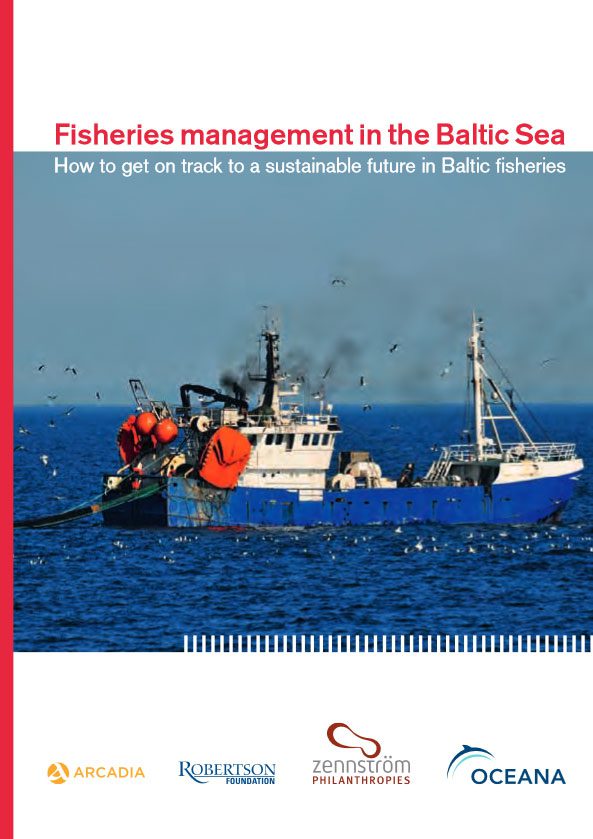Report | November 25, 2015
Fisheries management in the Baltic Sea. How to get on track to a sustainable future in Baltic fisheries
A multitude of human activities have put the Baltic Sea ecosystems under severe pressure and turned this brackish, semi-enclosed sea into one of the most polluted in the world. Destructive fishing practices like dredging and bottom trawling pose heavy threats to these sensitive ecosystems. Oceana’s report on fisheries outlines the biggest problems related to fisheries in the Baltic Sea and shows that the problem of Illegal, Unregulated and Unreported (IUU) fishing remains a problem. The report also provides an overview of issues on the political agenda in European Union and discusses the need for improved fisheries management and the implementation of agreed commitments, like achieving Maximum Sustainable Yields (MSY) for all fish stocks by 2015 as a first step towards a sustainable fisheries management, and legal obligations, like achieving Good Environmental Status of all marine environments, including Baltic Sea by 2020.
Over 50 species of fish are commercially caught in the Baltic Sea and the Kattegat, for which only 10 of have been given scientific advice, and only five are managed with Total Allowable Catch (TAC) in the Baltic Sea. While the status of the eastern Baltic cod stock has improved over the last years, other stocks have not been as successful: most of the Baltic fish stocks are overfished, and for five of these (sea trout, flounder, turbot, brill and dab) scientific advice to limit fisheries has been ignored. Additionally, in the case of salmon in particular, the TAC was set twice as high as the scientific advice recommended. Despite the fact that salmon, sea trout and eel are all threatened and declining, they remain continuously commercially fished.
IUU fishing for cod in the Eastern Baltic Sea has declined in the past years after increased monitoring, control and surveillance efforts, but the problem is not solved overall and the percentage of unreported catches is still very high in certain fisheries. The worst examples right now include Baltic salmon and sea trout and cod in the Kattegat.
During the 2011 at sea expedition and harbour research, Oceana documented a number of unsustainable fishing practices. The findings included several large fishing vessels still officially registered as driftnetters, even though the driftnet ban in the Baltic Sea has been in force since 2008. Additionally several “semi-driftnetters” were documented that use driftnets which are anchored on one side making it legal, as this type of driftnet was excluded
from the driftnet ban but nevertheless has the same bycatch problem as conventional driftnets. Other findings included the unloading of cod in April in the Western Baltic Sea and in July and August in the Eastern Baltic Sea, despite the fact that fisheries in those months and areas are “closed” to preserve the cod stocks. Fish was also spotted being sold directly to consumers, inside and outside closed seasons, before or without being inspected to y catamounts. Furthermore, Oceana found it unacceptable that almost all Baltic sprat and an enormous amount of Baltic herring is caught for fishmeal and animal food, destined for highly controversial mink farms. These types of fisheries are unsustainable as they are carried out by large scale fishing vessels using very small mesh sizes which often take non target and undersized fish.


